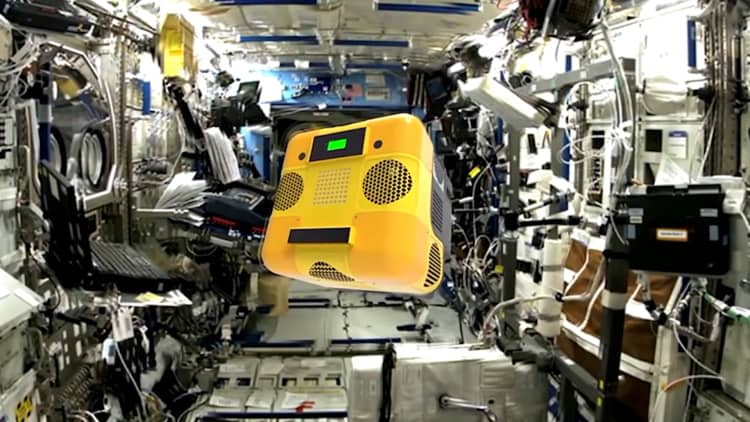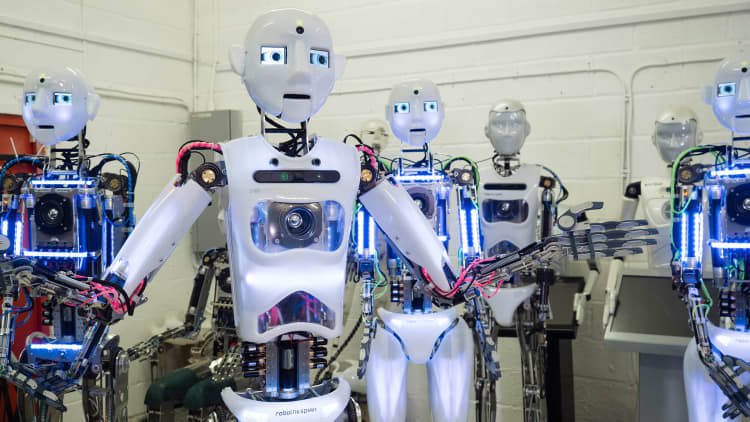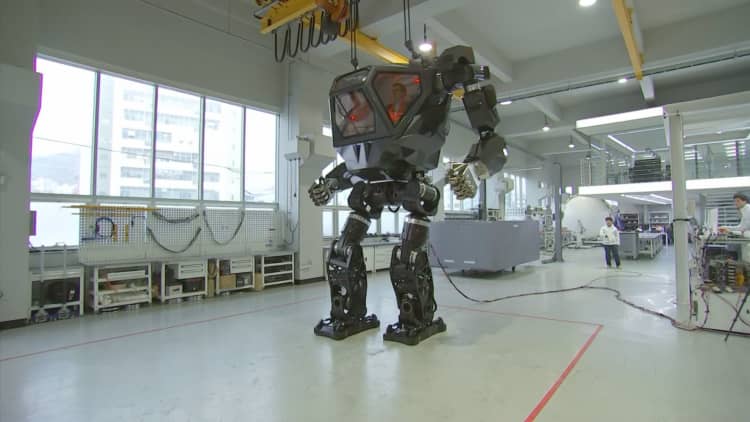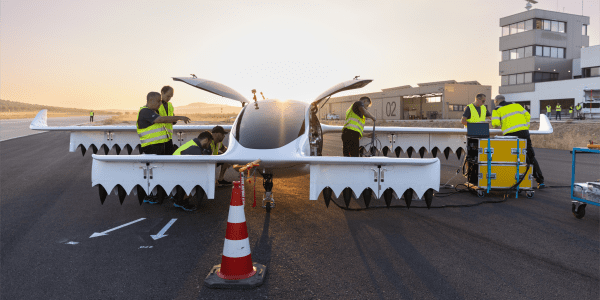About nine months ago, Google co-founder Sergey Brin and Johnson & Johnson CEO Alex Gorsky showed up at the Silicon Valley office of a start-up called Verb Surgical. They challenged each other to use robotic arms to put sutures into a squishy, synthetic tissue.
That particular robot, created by a collaboration of engineers from Google and J&J, is still a prototype and won't hit the market for a few years. The technology is still off-limits to the outside world, but employees and a few visiting surgeons have tried it out.
Google parent company Alphabet has a slew of big bets in health care, including technology to help manage diabetes and tools for people with Parkinson's disease, but its investment in Verb's surgical robotics business could prove to be the biggest yet.
Verb's goal is to introduce a better, cheaper surgical robot into the market in 2020, plus a bunch of software tools for capturing insights from procedures.
It's a huge potential market.

The surgical instruments business alone is expected to reach more than $12 billion by 2025, with the biggest players in the space including J&J, Medtronic, and Intuitive Surgical. Verb believes that's a conservative estimate, and that it could generate billions based on the current market size alone.
That could turn Verb into a material payday for both Alphabet and Johnson & Johnson.
How Verily works with Verb
The relationship between Alphabet and Verb is complicated.
Verily, formerly called Google Life Sciences, is Alphabet's main health tech business. In financial statements, Verily rolls up into Alphabet's "Other Bets," which includes a bunch of other long-term bets like Waymo (self-driving cars) and GV (early-stage venture capital).
At this stage, Verily is doing a lot of things. It has partnerships with traditional life sciences companies like J&J, Dexcom and Sanofi; makes equity investments; spins out companies; does futuristic projects in-house; and runs or co-manages research projects.
Verily hasn't shared much about the financial terms of its life sciences collborations, and they seem to widely vary, but in 2016 Brin revealed to Google employees at an internal meeting that Verily is already profitable.
CNBC has learned some business details about Verily and Verb Surgical that shed new light into how Verily works, and how it benefits its parent company.
Verb Surgical emerged from stealth in 2016, but little has been written about it since. It's structured as an independent company created through a partnership between Verily and J&J -- the first of its kind.
That's different from the other way that Verily interacts with health and biotech start-ups, which is to make a small investment and offer space on its campus.
Verb has about $500 million in investment, several sources have said, and Alphabet and J&J are the primary (but not only) holders of equity.
If it's successful, the sources also said that J&J has an option to buy out Alphabet's shares, but the terms for that buyout are unknown.

The company now has more than 200 employees according to a Linkedin search, and is continuing to develop a set of software tools to accompany the robotics. About 50 developers from Google have been brought in to help with that effort.
That arrangement highlights another benefit for Alphabet beyond the long-term financial upside: employee retention.
Engineers who are interested in making an impact in health care can work on a relevant project for a couple years, while still being employed by Alphabet. Verb pays Alphabet for the engineers. If engineers love the project, they can apply to be hired full-time by Verb.
Alphabet engineers currently on loan to Verb hail from Project Loon, Google's project that involves using balloons to spread Internet access, YouTube, Google Apps, Google Fiber and more.
Verily software director Tom Stanis is a case in point. He started on Google's AdWords team made the move over to Verily after being involved in a serious bike accident. During treatment, doctors discovered a mass in his kidney that turned out to be cancerous.
He distinctly recalls when the surgeons told him that they'd be using a robotic set of arms to remove the tumor.
"I assumed it would be some autonomous robot put in the room with me, rather than the reality of a surgeon being more precise," he said.
Platform for digital surgery
The collaboration between Verb and Verily gives the two companies an edge over the best-known surgical robot in the market today: Intuitive's da Vinci.
That device is far from perfect. It's large and cumbersome, and it doesn't come cheap. The list price for a fourth-generation model is currently just shy of $2 million, putting it out of range for hospitals in developing nations.
"There's almost 8 billion humans on the earth and 5 billion (of them) don't have access to surgery," said Verb CEO Scott Huennekens, in an interview.
But Verb and its corporate partners have more ambitious plans than hardware alone.
Huennekens refers to it as a "platform for digital surgery, of which robots are just a part."
He believes Verb has a competitive edge because it's collected experts from a wide range of disciplines, including optics, hardware and machine learning. Currently, the device is undergoing animal trials, and will eventually seek regulatory approval.
"We want to create remarkable things, and I know that there are high expectations on us," he said.
WATCH: CNBC takes a ride in 13-foot walking robot







